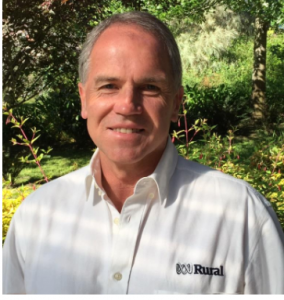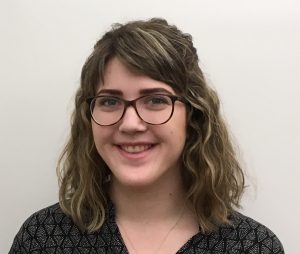Click Here for a printer-friendly PDF of this newsletter.
Addressing “chaos” in the privacy, security, and control of farmers’ data
We are gathering information about communications aspects of “precision farming.” One aspect involves farmers’ concerns about the privacy, security, and control of their data. Early developments in this fast-changing arena have sparked inconsistent agreements between farmers and the firms that provide precision technologies and services. So we are adding to ACDC a new report of efforts by the Ag Data Transparency organization “trying to bring some order and consistency to this chaos.”
It has developed a “Model” Ag Data Use Agreement, which is free to download to any company that wants to improve its online data contracts. You can read an announcement and chart here.
Who in the world have developed most patents for genetically modified crops technology
A new article in Scientometrics reported use of patent data to illustrate how the innovation of genetically modified crop technology diffused and distributed globally over time. Data collected from the Derwent Innovation Index were used to construct country patent citation networks, from 1984-2015, for soybeans, cotton, maize, and rapeseed.
Among the reported findings:
- Only seven developing countries appeared in the country citation network
- Most developed countries were reluctant to employ GM crop technology for commercial cultivation
- Private business stood out in the patent citation network. “The early adoption and better performance of developed countries can be explained by the activities of large established private companies.”
You can read the abstract, research methods, and reference list from the publisher here. Or confer with us at acdc@library.illinois.edu.
A 20-year view of precision agriculture adoption in the U.S.
We recently added to the large ACDC collection of “adoption” literature a 1997-2017 overview of adoption of precision crop farming in the United States.
At the InfoAg 2018 conference, researchers Bruce Erickson and James Lowenberg-DeBoer reported on precision technologies used by agriculture retailers across that period. Their presentation summary included these insights:
- GPS guidance technologies have been adopted rapidly by retailers
- Information-intensive technologies are more complicated; adoption is slower
- Many ag retailers are now offering data management and archiving
- Few are offering data analysis
- Creating a profitable, data-driven ag input supply business is a challenge for them
You can read their PowerPoint presentation here.
Public concerns, Extension services, and the future of land-grant universities
Thanks to Ashley Rice, recent graduate of Purdue University, for contributing to ACDC a copy of her master’s thesis: “Factors influencing Indiana residents’ level of interest in engaging with Purdue University.”
Findings of her statewide survey among 1,003 Indiana households identified five top concerns: affordable health care (major concern for 63%), violent crime (45%), pollution (32%), prescription drug abuse (37%), and making ends meet (38%).
Findings also confirmed that respondents were generally interested in engaging with Purdue Extension programmatic areas and there was relative agreement that Purdue University makes a positive contribution to the state of Indiana. In closing, she observed that “Land-grant universities can continue to rise to the challenge and deliver state-of-the-art education, research, and resources for all people, as long as they listen to the public and address critical social, community and stakeholder issues.”
You can read this thesis online by open access here.
Welcome to the new ACDC manager

With special pleasure, we welcome Prof. Janis Shearer as new manager of the Agricultural Communications Documentation Center. Janis joined the Funk ACES Library last month as Public Services and Engagement Librarian in the Life Sciences Division.
She is a recent graduate of the Master of Library and Information Science Program at St. Catherine University, St. Paul, Minnesota. With a BS degree in environmental geography from Ohio University and Master of Agriculture in horticulture degree from the University of Minnesota, she also brings 15 years of administrative and project management experience.
Funk ACES Library serves as hub library for life sciences on the University of Illinois campus. So she will coordinate and expand outreach and engagement activities of varied units across campus. Those include University of Illinois Extension and the Agricultural Communications Program within the College of ACES. As a specialized resource of the Funk ACES Library, ACDC is closely affiliated with the Agricultural Communications Program. You can reach her through her email: jshearer@illinois.edu
Communicator events approaching
October 9-13, 2019
“Headwaters to the Plains.” Annual conference of the Society of Environmental Journalists at Fort Collins, Colorado USA.
Information: http://www.sej.org/initiatives/sej-annual-conferences/AC2019-main
October 11-12, 2019
Seminar of the Swiss Agricultural Journalists at the guest house Probstenberg, located between the municipalities of Welschenrohr and Seehof, Switzerland. Information: https://www.agrarjournalisten.ch/seminar
November 11-13, 2019
Professional development conference of the International Food Wine and Travel Writers Association at Santa Fe, New Mexico, USA. Information: www.ifwtwa.org/2019-ifwtwa-conference
November 13-15, 2019
“75 years strong.” Anniversary convention of the National Association of Farm Broadcasting (NAFB) in Kansas City, Missouri.
Information: https://nafb.com/events/nafb-convention
December 6-7, 2019
“Pluralistic extension for enhancing farmers’ income through reaching the unreached.” National seminar organized by Mahatma Phule Krishi Vidyapeeth and Maharashtra Society of Extension Education at Maharashtra, India. Information: http://www.inseeworld.com/seminars.htm
Bring on more stories about failure
We close this issue of ACDC News with advice from Hew Watts, an English farmer who expressed it at a 1967 international conference of agricultural journalists:
“One of the biggest weaknesses is in your continual reporting of success. This gives us a feeling of inferiority, which we are inadequate for the tasks that others do so much better. The occasional reporting of failures greatly improves my morale.”
Best wishes and good searching
Please pass along your reactions, suggestions, and ideas. Feel free to invite our help as you search for information. Don’t forget to follow us on Twitter @ACDCUIUC. And please suggest (or send) agricultural communications documents we might add to this unique and valuable international collection. We welcome them in hard copy (sent to Ag. Comm. Documentation Center, Room 510, 1101 S. Goodwin Avenue, Urbana, IL 61801) or in electronic format sent to acdc@library.illinois.edu


